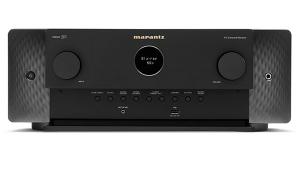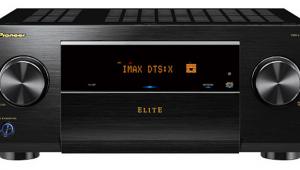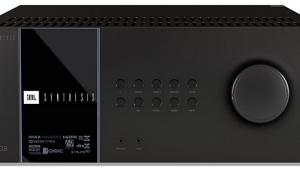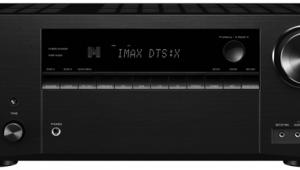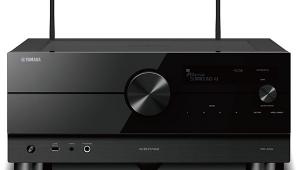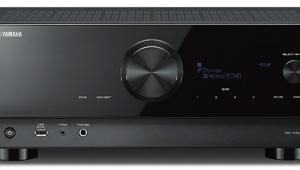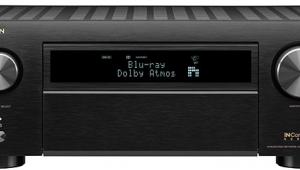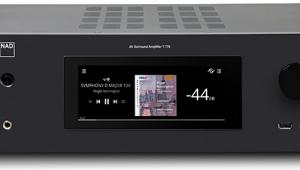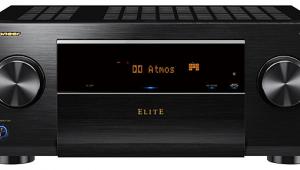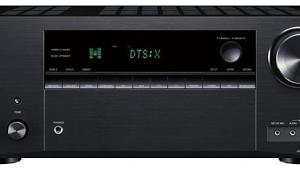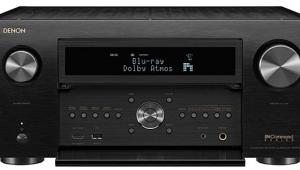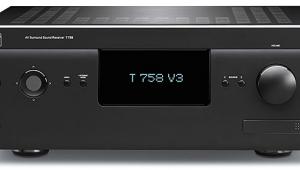Marantz SR6006 A/V Receiver HT Labs Measures
Two channels driven continuously into 8-ohm loads:
0.1% distortion at 127.9 watts
1% distortion at 153.2 watts
Five channels driven continuously into 8-ohm loads:
0.1% distortion at 75.9 watts
1% distortion at 92.0 watts
Seven channels driven continuously into 8-ohm loads:
0.1% distortion at 71.3 watts
1% distortion at 83.4 watts
Analog frequency response in Pure Direct mode:
–0.14 dB at 10 Hz
–0.04 dB at 20 Hz
–0.08 dB at 20 kHz
–2.80 dB at 50 kHz
Analog frequency response with signal processing:
–0.44 dB at 10 Hz
–0.15 dB at 20 Hz
–0.43 dB at 20 kHz
–59.42 dB at 50 kHz
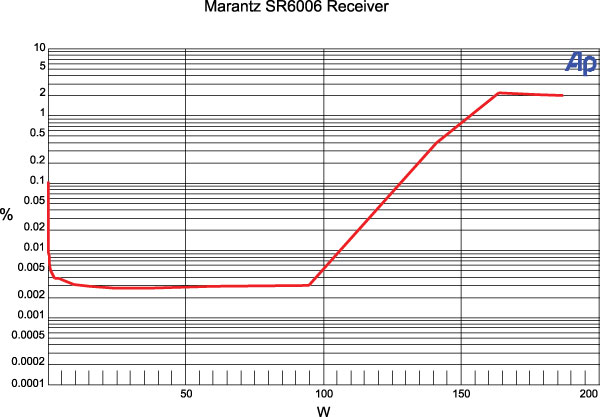
This graph shows that the SR6006’s left channel, from CD input to speaker output with two channels driving 8-ohm loads, reaches 0.1 percent distortion at 127.9 watts and 1 percent distortion at 153.2 watts. Into 4 ohms, the amplifier reaches 0.1 percent distortion at 156.8 watts and 1 percent distortion at 195.8 watts.
Response from the multichannel input to the speaker output measures –0.13 decibels at 10 hertz, –0.03 dB at 20 Hz, –0.07 dB at 20 kilohertz, and –2.87 dB at 50 kHz. THD+N from the CD input to the speaker output was less than 0.005 percent at 1 kHz when driving 2.83 volts into an 8-ohm load. Crosstalk at 1 kHz driving 2.83 volts into an 8-ohm load was –76.85 dB left to right and –76.78 dB right to left. The signal-to-noise ratio with an 8-ohm load from 10 Hz to 24 kHz with “A” weighting was –110.24 dBrA.
From the Dolby Digital input to the loudspeaker output, the left channel measures –0.10 dB at 20 Hz and –0.27 dB at 20 kHz. The center channel measures –0.09 dB at 20 Hz and –0.15 dB at 20 kHz, and the left surround channel measures –0.09 dB at 20 Hz and –0.10 dB at 20 kHz. From the Dolby Digital input to the line-level output, the LFE channel is –0.02 dB at 20 Hz when referenced to the level at 40 Hz and reaches the upper 3-dB down point at 118 Hz and the upper 6-dB down point at 121 Hz.—MJP
Video Test Bench
In most respects, the Marantz SR6006 appears to be a near-clone of the Denon AVR-3312CI we reviewed last month—not surprising because the two brands are owned by the same parent company (D&M Holdings) and sell for comparable prices. The Marantz therefore turned in results identical to the Denon on our video bench tests, which are run HDMI in to HDMI out. It excelled in particular on the 2:2 deinterlacing tests—tests that have tripped up many of the AVRs we’ve tested. As with the Denon, the Marantz failed only the chroma resolution test, which indicated a major red rolloff on the highest horizontal resolution burst (only blue lines remained visible on the burst). However, this should not degrade most real-world program material

As with the Denon, the only snag was in accessing the somewhat confusing menus for setting up the video-output resolution and the way this is presented in the (CD-ROM) manual. The latter describes the setup procedure for four pages before it tells you how to access the setup menu itself. (Hint: You have to access the Input Setup submenu to set the output resolution, and it’s set separately for each input. —TJN
